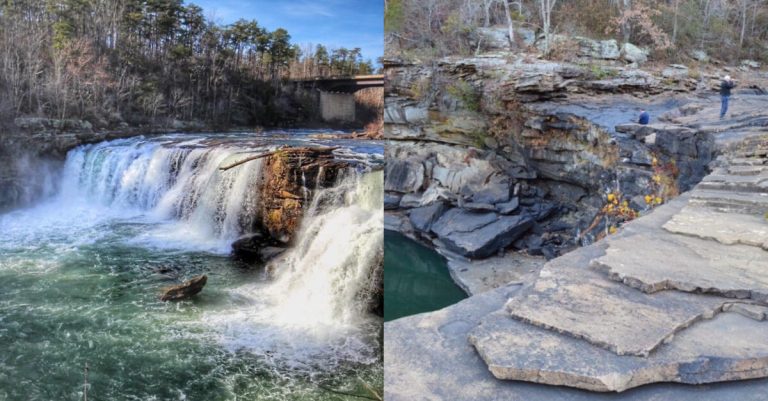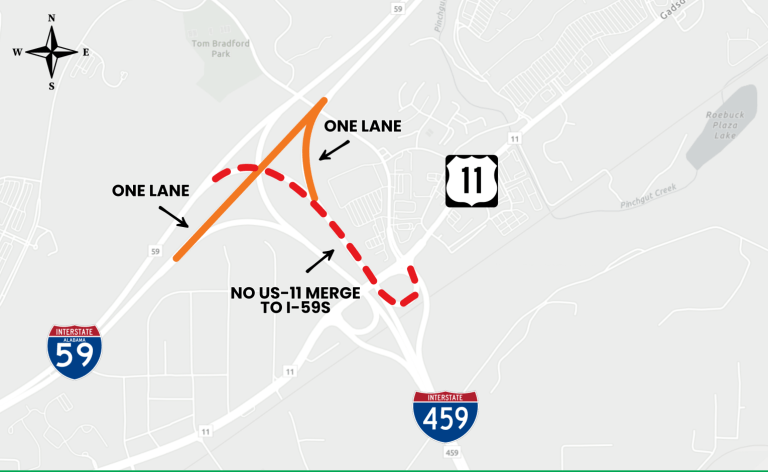Reviewed by: Pat Byington
The Bham metro has the most tree canopy out of the state’s other urban areas. What does that mean?
Reading time: 5 minutes

We’ve all felt the relief of a shady tree on a hot summer day — or in Alabama’s case, a hot fall day, too — but did you know that shade from trees can add up to a larger impact on overall temperature in an area?
Tree canopy is the total land area that is shaded by trees, according to The Sustainable Development Code. Not only does this area provide much-needed respite from the heat, but it also reduces air pollution, reduces heating and cooling demands, increases property values, improves physical and mental health and reduces storm water runoff.
Birmingham + Alabama’s tree canopy
Out of the seven congressional districts in Alabama based on the 2023–2025 map, District 6 — which contains most of the Birmingham metro area — has the most tree canopy in the state, coming in at 65% tree canopy. The tree canopy is generally made up of woody vegetation taller than 10-15 feet.

After District 6, the tree canopy area for other districts is:
- Auburn, Anniston, Sylacauga, Talladega — District 3: 59.9%
- Gadsden, Florence, Muscle Shoals, Jasper — District 4: 53.2%
- Mobile, Daphne, Fairhope, Gulf Shores — District 1: 52.5%
- West Montgomery, Southwest Birmingham, Selma, South Tuscaloosa — District 7: 52.2%
- East Montgomery, Troy, Ozark, Enterprise — District 2: 50.8%
- Huntsville, Decatur, Scottsboro — District 5: 37.5%
To explore these areas more in depth, visit the TreeCanopy.US map and zoom in to see more details.
Alabama fares pretty well compared to the rest of the country, coming in at 53.5% tree canopy, only behind:
- New Hampshire: 62.9%
- Maine: 62.6%
- Georgia: 55.9%
- West Virginia: 54.7%
- Massachusetts: 54.3%
- Connecticut: 54%
American Forests, the oldest nonprofit conservation organization in the United States, used to recommend urban areas strive for 40% tree canopy, but they revised that goalpost several years ago, stating that it was not a realistic goal for much of the country.
Now, they say each city should evaluate what is possible in their existing environment. For instance, forested states (like Alabama) can achieve 40-60% urban tree canopy. For grassland cities, 20% is a more realistic goal, and desert cities have a realistic baseline target of 15% tree canopy.
Growing the tree canopy
There is documented evidence that lower-income areas have much lower tree canopy coverage — including in Jefferson County — and there are organizations who are trying to fix that.

Cool Green Trees is a project of Cawaco RC&D Council supported by the Jefferson County Department of Health. A 2020 study, which led to the funding of the program, identified areas in the county with overlapping characteristics:
- Urban heat islands
- Flooding
- Low tree canopy cover
- Low income
Although the Birmingham area at-large has a good amount of tree canopy coverage, much of the more urban areas have “impervious” land — or land where trees cannot be planted, like roads — and minimal tree canopy.
The study identified areas with high “green opportunity,” meaning there was enough available land to make a substantial difference in the tree canopy percentage. This can be done by planting trees in downtown areas and decreasing road width, which are actions Cool Green Trees recommended for Bessemer.
What can the community do?

Especially in biodiverse Alabama, there are many environmental organizations that recognize the importance of the tree canopy and increasing quality of life in their communities.
National nonprofit Arbor Day Foundation recognizes cities across the U.S. that have demonstrated their commitment to making their areas greener. Some of those cities, given the “Tree City USA” designation, are also given growth awards to recognize annual activities in specific categories, like measuring trees and forests, planting trees and performing advocacy and community education.

In our area, those “Tree Cities” with growth awards include:
- Birmingham
- Mountain Brook
- Homewood
- Vestavia Hills
- Irondale
You can look for volunteer opportunities to plant trees and improve greenspace in your city, but there are also opportunities on an individual level.
Local researchers and experts have emphasized the importance of planting native trees and shrubs in your own yard, giving a home to insects, birds and more.

You can also keep an eye on local environmental groups’ social media pages, like Cool Green Trees and the Alabama Environmental Council, for volunteer opportunities.
And, perhaps most importantly, next time you’re hiding from the heat in the shade of a looming tree, take a second to remember its impact and thank it for its help.
For news, events and more happening around Birmingham, sign up for our FREE newsletter.



